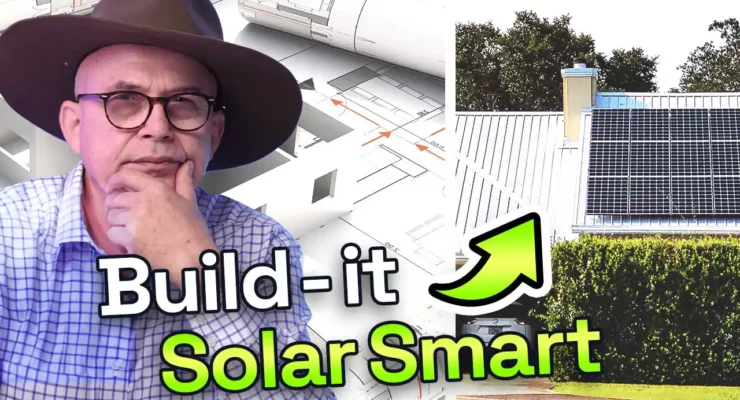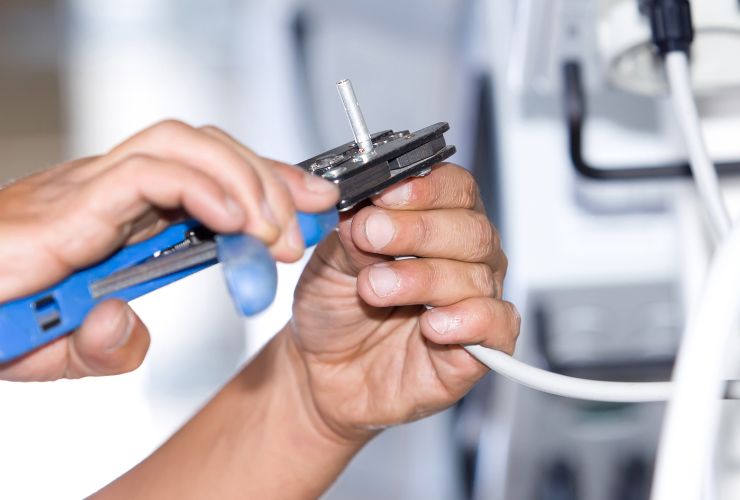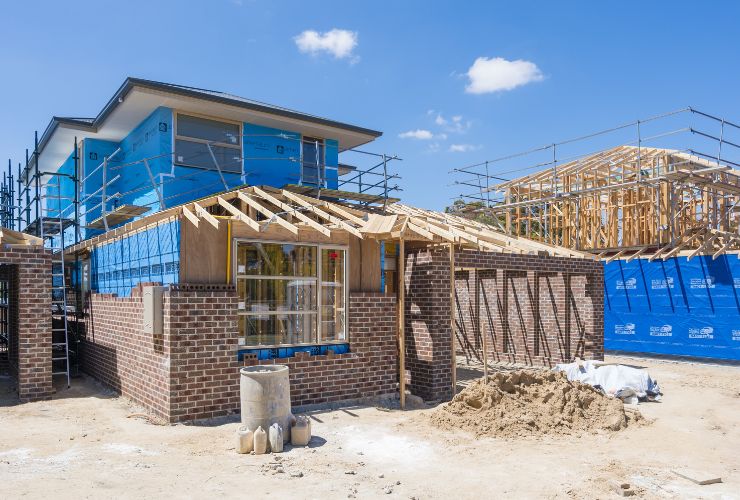
Fast read
Several advantages exist to installing solar panels and home batteries while building a new house. It can lessen environmental impact, save money, and raise the home's value in the long term.
Designing the roof for maximum sun exposure and little shade is crucial for getting the most out of a solar system. It's easier and looks better to add solar panels and batteries later if the building is prewired for them.
Choosing the best placement for the solar system's components when building a new home gives you more freedom.
Should solar and battery installation be part of my new home?
One of the biggest tasks that an individual can take on is constructing their own home. This task needs a lot of time, energy, and resources. You have to think about design, materials, relationships with workers, money, landscaping, and subcontractors. Several ways exist for designing a home to be energy efficient during the construction process, one of these being the installation of comprehensive insulation and the inclusion of a solar energy system & battery system.
The extra step of planning for an energy-efficient home may seem tedious, but it will save you cash and energy in the long term. It also can increase the value of your home and reduce its environmental impact.
A solar-ready roof design can save you a lot of money
You must consult your architect and or builder to ensure this all works smoothly. We also recommend contacting a solar installation company and see if that company can offer the input of a qualified Clean Energy Council Solar Designer.
Yes, it’s better to install solar and battery systems in an energy-efficient home during construction rather than afterwards. This is because it can be more effective and efficient. Let’s explore why this is the case and how solar can benefit your new home.
The first and most important consideration for designing your new home with solar is your roof.
Avoid designing a roof with lots of ridges and gables, as solar panels will be more challenging to install on such designs. Therefore constructing a roof that is orientated to optimal sun exposure for your solar panel system is one variable you would want to consider.
The best solution is a relatively straight roof, at 10 to 25 degrees angles, pointing toward North, North-East, or North-West. This will ensure a solid ongoing solar output. If you have a lot of electricity use before noon – point some panels east; if you seek more available electricity in the afternoon, for example, because of air conditioning needs, point some panels to the West or Northwest.
Avoid creating a shaded roof
The other variable regarding your roof is shade. Make sure that when you are designing the roof, there are minimal trees or neighbouring buildings that would cast shadows over your PV system. The shade will reduce the solar system’s energy generation capability.
Thus, deciding on installing solar during, or maybe even better – before construction will benefit you, as you will be able to create a roof that allows for the most optimal energy generation for your particular circumstances each day.

Prewiring for solar and batteries in new homes will make future installation more accessible
One reason to include solar panels and batteries in your new home plan is so you can prewire for the PV system. This also allows for prewiring any unique home features and the battery.
Prewiring means you can run the required cables and wires through walls and cavities to the meter box in an unobtrusive way inside walls and cavities. Prewiring will avoid the ugly conduits outside the home or on the roof. These conduits are typical visual features of a post-built solar panel installation, especially of the cheaper, bargain variety.
Planning for renewables will create more flexibility in the final design
The final reason it is beneficial to install during construction is that it allows for flexibility.
Building a new home allows you to choose where your solar system components will be located. For example, you can select a location for the inverter that would be an appropriate temperature to allow it to function at max capacity (usually in the garage).
Sometimes the outside hot water tank, heat pump, air conditioning unit, storage battery, and solar inverter compete for the house’s or wall space’s valuable side. By planning all these energy components of the home during the design phase, the best solution can be developed, which will create the most visually pleasing and functional solution.
If you plan on adding batteries to your solar PV system in the future, make sure to install the required wiring now. This will allow you to easily accommodate the batteries when the time comes.
Planning ahead by installing the necessary wiring now will save you time and effort later on. Make sure to consult with a professional to ensure the wiring is done correctly. Instead of adding new wires after construction, some options may be limited due to completed walls or other enclosed parts.

In summary:
In summary, if you are planning on building your dream home and this involves being energy efficient, consider installing solar and batteries and even an EV car charger during the construction process. However, be sure to read out nine missteps regarding solar and battery before purchasing.
During construction, you can have a solar installer run wires from the roof to the switchboard and battery location. This will allow you to add solar panels, batteries, and an EV charger.
By doing this, the necessary work will be completed while building. This way, the necessary work is done during construction. They can cater for a smooth renewable energy system installation at a later part of the construction.


